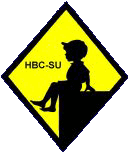
School wear at English primary schools varied over time. For the most part primary children dd not wear uniforms, nut in the late-20 century, many primary schools began adopting basic uniforms. English schools actually basically created school uniforms, but this was a phenomenon began at private schools, basically the country public (elite private secondary-level boarding) schools. This was especially the case (by the 19th century). This was also when preparatory schools were founded (mid-19th century). It is at these schools that basic school uniform garments were created. When secondary schools were opened for modest-income students, at first mostly grammar schools, they adopted the uniforms worn at the private schools. The first primary schools did not have uniforms (late-19h century). The British Government did not creatre a national system of primary schools until very late in the 19th century (1870s). There were, however a variety of primary level schools in the early- and mid-19th century. Important items were caps, Eton collars, suit jackets, knee pants, long stockings, high-top shoes. There were changes in school styles after World War I (1920s). Long stockings unlike contnental Europe generally disappared in Britain. Many chldren adopted standard school garments. Alhough the schools did not have uniforms, many children wore the standard garments worn at prep schools. Important items became caps (until the 1960s), ties, grey shirts, sweaters, grey short pants, knee socks, and school sandals These were not items mandated by the schools, they were simply garments that were commonly worn by the children and that mothers saw as suitable for schools. Girls mostly wore bsasic dresses, white socks, and strap shoes or school sandals. We do begin to see uniforms worn at primary schools (1970s). It was seen as a discipline factor and a way of reducing the socio-economic differences among the children. More schools adopted uniforms in he late-20h century, but this was still a minority of schools. This was all done at the indiviual school by school basis, there were no national standards.
School wear at English primary schools varied over time. For the most part primary children dd not wear uniforms, nut in the late-20 century, many primary schools began adopting basic uniforms. English schools actually basically created school uniforms, but this was a phenomenon began at private schools, basically the country public (elite private secondary-level boarding) schools. This was especially the case (by the 19th century). This was also when preparatory schools were founded (mid-19th century). It is at these schools that basic school uniform garments were created. When secondary schools were opened for modest-income students, at first mostly grammar schools, they adopted the uniforms worn at the private schools. The first primary schools did not have uniforms (late-19h century). The British Government did not creatre a national system of primary schools until very late in the 19th century (1870s). There were, however a variety of primary level schools in the early- and mid-19th century. Infrmation is limited, but we beliece the children wore their ordinary schools. Important items were caps, Eton collars, suit jackets, knee pants, long stockings, high-top shoes.
Children wre 19th century stules ubi the early-20h century (1900s-10s). n nThere were important changes in school styles after World War I (1920s). Long stockings unlike contnental Europe generally disappared in Britain. They lasted a lttle longe for girls than boys. Many chldren adopted standard school garments. Alhough the schools did not have uniforms, many children wore the standard garments worn at prep schools. Important items became caps (until the 1960s), ties, grey shirts, sweaters, grey short pants, knee socks, and school sandals. The sweaters at first were modtly plain grey sweaters. The peaked caps were iconic. The style was adopted by the Cub Scouts (1910s). After World War II we begin to see brightly coloed and patterned sweaters (1970s) We at first see rather baggy, long short pants, commnly done in fannel. The British term was short trousers. Ww begin to see mmre trim fitting Continenal-style shorts (1960s). These were not items mandated by the schools, they were simply garments that were commonly worn by the children and that mothers saw as suitable for schools. Herre we aee a primary school (1970s). schhool from the Girls mostly wore bsasic dresses, white socks, and strap shoes or school sandals. We do begin to see uniforms worn at primary schools (1970s). It was seen as a discipline factor and a way of reducing the socio-economic differences among the children. More schools adopted uniforms in he late-20h century, but this was still a minority of schools. This was all done at the indiviual school by school basis, there were no national standards.
Related Chronolgy Pages in the Boys' Historical Web Site
[The 1880s]
[The 1930s]
[The 1940s]
[The 1950s]
[The 1960s]
[The 1970s]
[The 1980s]
Related Style Pages in the Boys' Historical Web Site
[Long pants suits]
[Short pants suits]
[Socks]
[Eton suits]
[Jacket and trousers]
[Blazer]
[School sandals]
